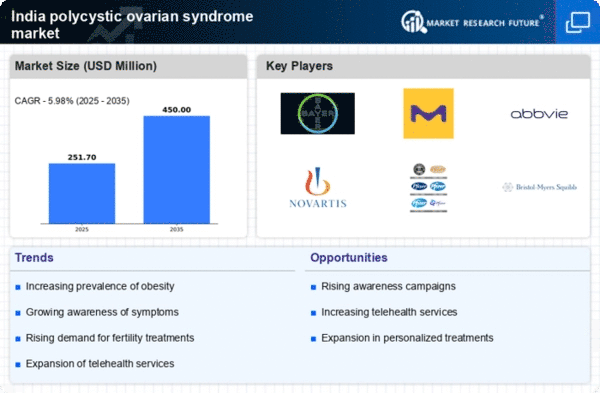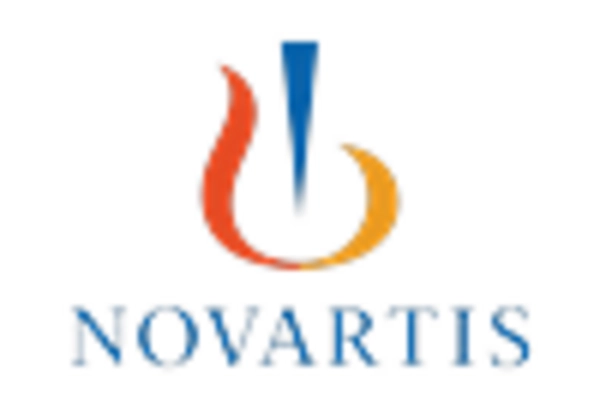Increasing Incidence of PCOS
The rising incidence of polycystic ovarian syndrome (PCOS) in India is a crucial driver for the polycystic ovarian-syndrome market. Recent studies indicate that approximately 10-15% of women of reproductive age in India are affected by this condition. This growing prevalence is likely to increase the demand for diagnostic and therapeutic options. As awareness about PCOS expands, more women are seeking medical advice, leading to a surge in consultations and treatments. The polycystic ovarian-syndrome market is expected to benefit from this trend, as healthcare providers are increasingly focusing on early diagnosis and management strategies. Furthermore, The increasing incidence is likely to prompt healthcare policies to prioritize PCOS, potentially leading to enhanced funding for research and development in this area.
Government Initiatives and Support
Government initiatives aimed at improving women's health in India are significantly influencing the polycystic ovarian-syndrome market. Various health programs and campaigns have been launched to raise awareness about reproductive health issues, including PCOS. The Indian government has been actively promoting health education and access to healthcare services, which is likely to enhance the diagnosis and treatment of PCOS. For instance, the National Health Mission has been instrumental in providing resources and support for women's health issues. Such initiatives may lead to increased funding for research and development in the polycystic ovarian-syndrome market, fostering innovation in treatment options and improving patient outcomes.
Growing Focus on Lifestyle Management
There is a growing focus on lifestyle management as a means to address polycystic ovarian syndrome in India. Healthcare professionals are increasingly advocating for lifestyle modifications, including diet and exercise, as effective strategies for managing PCOS symptoms. This shift towards holistic management is likely to drive the polycystic ovarian-syndrome market, as more women seek guidance on lifestyle changes. The integration of wellness programs and nutritional counseling into treatment plans may enhance patient engagement and adherence to management strategies. Furthermore, the rise of health and wellness apps is facilitating access to personalized lifestyle management resources, potentially increasing the number of women actively managing their PCOS.
Rising Demand for Fertility Treatments
The increasing demand for fertility treatments among women with polycystic ovarian syndrome is a significant driver for the polycystic ovarian-syndrome market. PCOS is a leading cause of infertility, and many women are seeking assisted reproductive technologies to conceive. The market for fertility treatments, including in vitro fertilization (IVF) and ovulation induction therapies, is expanding as awareness of these options grows. In India, the fertility treatment market is projected to reach approximately $1.5 billion by 2026, indicating a robust growth trajectory. This rising demand is likely to encourage healthcare providers to develop specialized treatment protocols for women with PCOS, thereby enhancing the overall polycystic ovarian-syndrome market.
Advancements in Diagnostic Technologies
Technological advancements in diagnostic tools are transforming the polycystic ovarian-syndrome market in India. Innovations such as non-invasive imaging techniques and advanced hormonal assays are enabling earlier and more accurate diagnosis of PCOS. These advancements are likely to enhance the efficiency of healthcare providers in identifying the condition, which could lead to timely interventions. The market for diagnostic devices is projected to grow as healthcare facilities adopt these new technologies. Moreover, the integration of telemedicine and digital health solutions is facilitating remote consultations, making it easier for women to access diagnostic services. This trend may further stimulate the polycystic ovarian-syndrome market by increasing the number of diagnosed cases.

















Leave a Comment